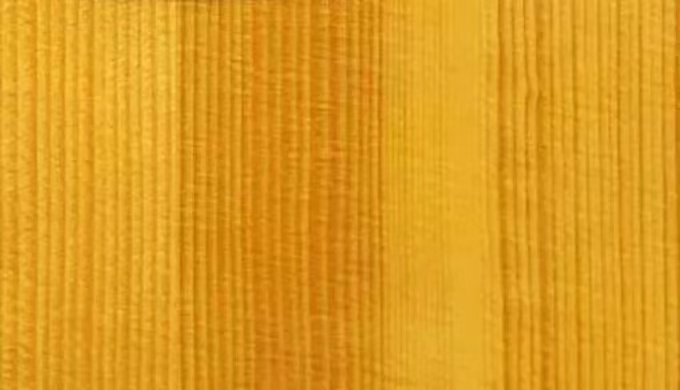Guitar brand introduction to each wood
Many piano friends have little knowledge of guitar wood, and much information on the Internet is not comprehensive. Today, Amartin will share your most detailed introduction to guitar wood. The content of this article is dry. It is translated from official introductions from major manufacturers such as Martin and Taylor. The information is relatively complete, and I hope it can help you.
Guitar wood can only determine the direction and characteristics of the basic tone. The wood’s and drying ages are also very important factors, and the piano-making technology can largely influence the guitar’s sound.
1. Panel wood
(1) Sitka spruce
Martin: Sitka spruce is the ideal construction material for any steel-stringed instrument of any size; it delivers a loud and bright sound; Martin chooses Sitka as the top for most of his guitars because, with straight and uniform wood grain, it can withstand large steel-string tension and has a long life.
Taylor: Sitka spruce has become the reference standard for modern guitar acoustics as a top or bracing material. 85%-90% of Taylor’s guitars are made of Sitka spruce, which translates strength and elasticity into a wide dynamic range for a clear and accurate sound. Sitka is capable of anything; whether intense, the strumming is still delicate fingerpicking.
Santa Cruz: Sitka spruce can sharpen the warmer parts of the guitar sound and is the most common top choice on rigid string guitars.
Lakewood: Bright sound and powerful volume.
Goodall: It is most suitable for strings with medium and low tension when used as a top. Sitka may be the best panel with the best balance of mid-low and high-frequency. Its bass is very powerful, and the mid-frequency part is also bright. Not the biggest for a fingerstyle guitar. Due to its strong density, Sitka can be made 005″ to 007″ thinner than many top panel materials.
(2) Adirondack
Martin: Similar in characteristics to European spruce, Adirondack spruce was in abundance in the 1930s and was used in the tops of Martin guitars, and with its extraordinary sound, sharp feedback, and clear tone, it has become everyone A typical example of a race to re-enact.
Taylor: Also known as Sequoia or Appalachian spruce, the Adirondacks defined the guitar before World War II, and now it’s getting earlier and earlier for the Adirondacks, although under current conservation conditions, the Adirondacks the spruce matured earlier; Adi was smaller at the time of felling than in the past. Appearance-wise, Adidas struggled to meet adequate aesthetic standards, as they were yellowish and wider, and more irregular in texture.
However, the Adipika Spruce has a stronger dynamic range and a higher volume ceiling in timbre performance. Therefore, Adi can maintain sufficient clarity when playing more intensely while the volume increases. Its acoustic properties are unmatched by any other panel. Notes: Ideal for guitarists who pluck hard or play aggressively and are ideal for woods applied on GS or D barrels.
Santa Cruz: Adirondack is the classic spruce used in guitar tops, also known as red spruce or red spruce, and this wood is often used on vintage-sounding guitars. The Adirondacks are known for their superior strength. Now that it’s becoming increasingly difficult to find Adi woods with a beautiful appearance and outstanding acoustic properties, scGC finds the perfect Adi top for every custom guitar.
Lakewood: Responsive and powerful sound.
Goodall: Also known as Sequoia, it was used as the main material for aircraft structures at the beginning of the last century because of its extremely high strength. Some Adi’s have a very uniform and excellent intensity in any part, Adi’s sound characteristics are more famous than its appearance; the master Adi panel looks similar to Engelmann spruce, the whole panel is milky white with very small pith thread, the more precious Adi looks very close to Engelmann spruce or Sitka spruce.
Some silica tops will have a slight discoloration, which is acceptable because sometimes an Adirondack spruce tree is exactly the size of a guitar. We found the Adirondack the perfect choice for a panel with a big, punchy sound and a powerful, focused bass.
(3) Alpine spruce
Martin: Grows at high altitudes, grows slowly, with tight and even growth rings. Alpine spruce is light enough to vibrate freely under the tension of steel strings, with properties similar to Adirondacks, loud, clear, and dynamic.

Santa Cruz: The ratio of strength to weight is similar to that of the Adirondacks; European spruce is a beautiful sound wood with a long violin-making history. It’s also very Adirondack-like in sound characteristics, with gorgeous highs and tight lows. ScGC’s European spruce is sourced from the same wood supply company as the famous strobila and guar, and we will always use only the best woods.
(4) Cedar / Korean pine
Taylor: Cedar is less dense than spruce, which usually means the sound is warmer than spruce. If Sitka spruce has a full and wide dynamic range, cedar makes quieter tones louder. If played vigorously, the cedar volume will barely reach a good level. But when you pluck the strings vigorously, the cedar volume will reach a limit. Generally speaking, the sound of cedar will be very beautiful when you touch the strings softly, especially when playing fingerpicked.
The cedar top sound will be amplified when the strings are lightly touched. Still, it is unsuitable for strumming because the strumming force is often relatively strong and fast, making the sound volume quickly reach the upper limit of the cedar and the stronger the sound.
It will be out of control, so when the pick is strummed, the sound is often difficult to meet the player’s requirements. Also, cedar can vary in color from light to dark. Remarks: It is suitable for fingerstyle or guitarists who play with delicate touch strings. Generally, it is matched with the back and side of mahogany or rosewMahoganyake GA, GC, or GS bodies.

Santa Cruz: We use this deck on scGC’s fingerstyle guitars because it’s very responsive and has plenty of volumes even when you lightly touch the strings. And cedar is great for open or low-tension tuning, as it needs strings that match its graininess and character. Cedar loses its sonic integrity when the strings are played or driven vigorously, making it more limited, but cedar is still an excellent top choice for fingerpicking.
Lakewood: Responsive, bright sound
Goodall: Slightly less powerful than Engelmann spruce, ranging in color from light brown to reddish-brown to medium brown, without pith lines. Collision is prone to scarring, and it will fall off easily as an X keel. My opinion (James Goodall) is that cedar is more suitable for classical guitars and can only be used on low-tension strings for steel-string guitars.
It is very suitable for fingerstyle guitar tops; it will have a unique texture that is clear, gorgeous, and durable; the bass is also very concentrated, and the sound has a dry woody taste. Cedar is not sensitive to changes in humidity and has weaker suppression of string noise than Silica, and there will be some small problems with the sound after a long time.
(5) Acacia / Hawaiian Acacia
The above three types are vertical pattern acacia wood, curved pattern acacia wood, tiger pattern acacia wood, and the acacia wood can also be golden yellow, as shown in the picture below.
Martin: When used on the backside, the low-frequency response is slightly weaker than the imprint’s, and the high-frequency response is slightly less than that of real Mahogany. The sound qualitMahoganyar and balanced with the iconic flame pattern.
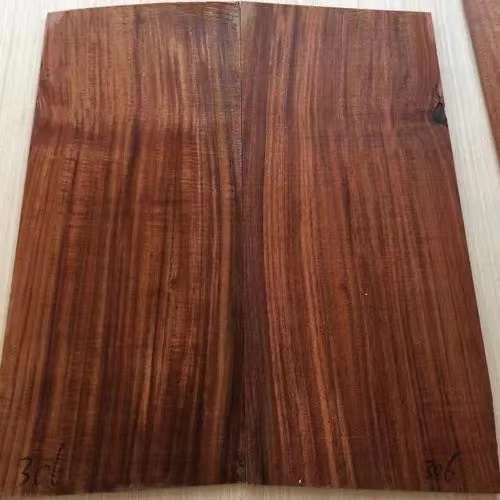
Taylor: A tropical hardwood, acacia has a mix of mahogany mids and maple highs, and due to its density, a new acacia guitar sounds a little too bright at first, tighter, kind of like maple. But after the sound is fully opened, the guitar will change a lot, the mid-frequency will be more open, the sound will become rich and sweet, and the resonance will become more sensitive.
There is a common phenomenon about acacia acoustic guitars. Some guitarists who prefer high frequencies buy a full acacia acoustic guitar and find that the high frequency of the guitar is too bright, but the fact is that the guitar does not have enough time to open the sound.
Remarks: It is suitable for fingerstyle guitarists who use different fingertips or picks for delicate plucking. Guitarists who like bright sounds need to pay more attention. The sound of acacia wood will be very bright. It is recommended to use fingertips of different thicknesses and materials. Or play with a pick to find the good brightness that works for you.
Santa Cruz: Acacia, black walnut, and sycamore are similar in sound characteristics to real Mahogany. Black walnut has Mahogany more sustainable than rosewood. These woods are old woods with rich resins. For the choice of these three kinds of wood, more consideration should be given to the appearance preference rather than the rumored acoustic properties of the wood.
Lakewood: (panel) balanced sound with clear treble; (back and side panels) balanced sound with sweet treble.
Goodall: Acacia is a tree native to Hawaii. Acacia has an amazing wood grain and beautiful color appearance, ranging from golden yellow to dark brown. A good acacia has a distinct wood grain and is reflective. The five grades of acacia wood we provide all have an excellent appearance. When we choose acacia wood as a panel, we will comprehensively consider the appearance and acoustic properties of the wood.
Some acacia wood does not have a dazzling appearance but has better acoustic properties. Acacia has excellent sound quality, its sound is sweeter than spruce, and its sustain characteristics are also different from spruce. Acacia doesn’t come out as short and punchy per note as spruce, but it’s more durable and even. I think the all-acacia acoustic guitar we made was perfect for jazz playing.
(6) Mahogany
African Mahogany
American Mahogany
Martin: Much lighter than rosewood, acacia, and maple, yet surprisingly powerful and loud, accentuating bright and transparent high frequencies.
Taylor: Mahogany has identified a typical basic tone type. The sound characteristics of all other guitar back materials can be described based on Mahogany, the basic sound characteristics ofMahoganyy. The mids of acoustic guitars tend Mahoganyre restrained, but the mids of peach blossoms are very distinct.
Mahogany’s thick, full midrange is sometimes described as “fat” or even “chewy,” with strings that enter the soundhole and can get plenty of vibration when a guitarist plays on the fretboard. The mid-frequency characteristics of the Mahogany give the sound enough vitality and make the souMahoganyed in full resonance.
As a very popular sound wood for decades, the mahogany guitar has been widely used in the recording of many previous retro-style songs, and its classic sound has become the origin of many music types, whether it is blues or folk, or slack key fingerstyle, Mahogany is involved as a guitar wood. Remarks: SuitablMahoganywide range of music and guitarists, especially those who like balanced sound, excellent dynamic range, and full tone.
Guitarists who like blues or classic retro-style music will appreciate the peach midrange; small cabinet Mahogany guitars (like GC or GA barrels) tend to be more suitable for fingerstyle, while aggressive guitarists prefer D or GS barrels. For the moderate, the GA barrel is a good choice. A guitarist who likes a “deep” introverted music style will play a more restrained sound due to the prominent mid-frequency of the peach blossom heart, while a guitarist with a bright music style will play a slightly less bright sound.
Santa Cruz: This Mahogany, truly from the rainforest, is our most cherished wood. There is no problem with our mahogany supply chain (Translator’s Note: Now the tropical rainforest timber is harvested and managed extremely strictly); we use the highest grade mahogany, which has the natural warm sound quality of rosewood; at the same time, the sound is clearer and brighter.

Lakewood: Balanced warmth
Translator’s Note: There are some misunderstandings about peach blossoms in China: the problem between African peach blossoms and American peach blossoms. Honduras peach blossoms respect American peach blossoms, the “tree” mentioned above. This kind of peach blossoms The overall price is much higher than that of African peach blossoms, and the prices of some varieties can even be compared to the shoulders.
(7) Mahogany
Taylor: (Aged Redwood) is the most popular virgin wood for custom, obtained from aged wood deep in northern California rivers, where rivers have baptized them for more than a century. It is used to make panels that can show a rich variety, unique colors, and dark colors mixed in because of the rich minerals of the river; these woods are due to their ancient
The age and volume of the wood have dense wood grain and intersecting grain, so it tends to have very responsive sound feedback while also having a cedar-like warmth; at Taylor, this wood has a nickname called “Evolutionary Edition” cedar.” Notes: For those who like the warm sound of cedar but want a little more brightness and resonance, it works great with rosewood and Mahogany back and sides, and when paired with Mahogany ebony, it has a striking look.
Goodall: The properties are almost identical to cedar, but the color is redder. High-gloss Mahogany usually has a beautiful sheen and strMahoganyetimes unimaginable lines of pith. The glue for making guitars is not as strong as spruce, and like red pine, Mahogany can only be used on low-tension strings. Mahoganyogany gives the fingerstyle guitar responsive mahogany and makes the sound three-dimensional. Some rosewoods have better low frequencies than red pine.
2. Back and side wood
(1) Sapele
Martin: Similar to the Mahogany, it highlights the powerful midrange, the sound is powerful, and Mahogany’s high frequency is bright and clear.
Taylor: Another wood that Taylor has been using for over a decade. It is sometimes mistaken for African Mahogany because of its very similar appearance. Sapele is a highly sustainable, fast-growing wood that is generally similar in sound to Mahogany but with a bit more treble, and our Sapele stock is pretty mahogany. Remarks: Suitable for all situations, it is similar to Airiguyi Summon at this point and has strong versatility. Whether singing or fingerstyle, Sapele can provide guitarists with a balanced tone.
(2) Indian rosewood
Martin: The resonance is excellent, the low frequency is deep and warm, the supply area of the printed pieces is managed in a standardized manner, the supply is sufficient, and the quality of the wood is very stable.

Taylor: Indy’s most commonly used and popular wood has a base like Mahogany (with a full mid-range) and expands the sounMahoganyh high and low-frequency bands. The low frequency dives deep, and the high frequency is bright (it can be understood that the high frequency is more brilliant).
If you look at all the frequency bands macroscopically, you will find that the intermediate frequency of the printed piece is relatively thin and not as full as the peach blossom heart. Indigo is a classic instrument wood like Mahogany, and it sounds impeccable because it’s knownMahoganyahogany; rosewood is a very adaptable wood that can Mahoganyin any music, contributing to its popularity.
You can fingerpick, strum, and split; no matter the situation, the rosewood’s performance is very stable and excellent, so you can play whatever you want. Note: Available for most playing types. If you want a guitar with deeper lows and brighter highs (like bluegrass), rosewood will do the job because its high frequencies are bright and clear. If you’re after a traditional, classic sound, then a rosewood D or GA is the way.
Santa Cruz: Warmth, deep-dive, rich tone – all rosewoods have in common, whether Indy, Bar, Horse or Coco Polo. No matter what kind of rosewood, it is easy to overlook that the back and side of rosewood require a very stable and uniform density of wood, and stamps are the best at this point.
Lakewood: Bass is deep, responsive, and has excellent volume.
The following identification methods are briefly introduced: the softer Indonesian rosewood has a wide wood grain and almost no fine lines. The ultimate identification method is to place it under the light, and the Indonesian rosewood will reflect green light. The wood grain of Indian rosewood below 2A is generally curved, the wood grain of Indian rosewood above 3A is straight, and the top grade above 4A will have straight, fine, and uniform vertical grain.
(3) Brazilian rosewood
Martin: The resonance is very strong, the low frequency is full and deep, and the high frequency is bright and beautiful. It is rare and expensive, so it is only used on some limited edition and custom guitars.
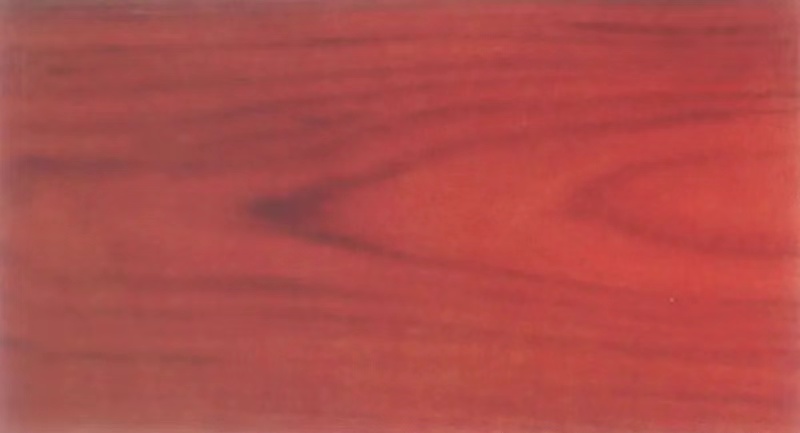
Santa Cruz: Bamei has been loved for centuries due to its classic, beautiful sound and excellent quality. Bambi gives the guitar a warm and rich sound, and the high frequency of Bamei is brighter than India’s. Ba Mei is a good choice in aesthetics, collection, and value preservation.
(4) Tiger Maple
Martin: It is also known as flame maple, a traditional violin top material. The density is high, the reflections are concentrated, the sound is bright and stable, and the feedback is excellent.

Taylor: Maple has long been known for its full-bodied sound and fast decaying sustain, and our current maple backs and sides have been improved with new technology.
The timbre has more warm tones, making the sound richer, with good volume, response, and sustain, while retaining the beautiful and natural color and texture of maple in appearance, and the sound also continues the high-pitched clarity; the low-frequency part becomes deeper, the result is a more diverse sound, allowing users to play other classic types of music.
The guitar becomes more versatile, not just positioned as a “stage guitar.” Judging from our maple guitar feedback, this backside is characterized by an unreserved display of personal skill.
Whether it’s a display or a wonderful string touch, the maple guitar can amplify it and make a brilliant performance. The places are more brilliant, and the places where the mistakes are made are more obvious. Note: Suitable for most applications, Taylor’s 600 series is suitable for various musical performances.
Santa Cruz’s bright tone makes this flame-textured hard maple ideal for jazz or arch guitars. Tiger Maple is great for those who prefer a more grainy feel.
Lakewood: Good feedback, good graininess, powerful treble.
(5) Ailiguyi Sumu
Taylor: More than ten years ago, Taylor showed the world a new species of back and side wood-Aliguchi, a kind of African rosewood. It has a very nice sound and is similar to rosewood. Characteristic but a little bit fuller than the rosewood mids, while the highs are bright but not as extreme as maple.
Lesser known than rosewood, Arrigo wood has beaten countless other models in many people’s trials. Notes: Suitable for all types of music, suitable for those who have no particular tone preference, or those who want to have a guitar that can perform all styles, no matter the barrel shape, the performance is very good.
Lakewood: Transparent tone, powerful volume

(6) Claro walnut
Martin: Similar in density and texture to Acacia, the sound is balanced, somewhere between rosewood and mahogany.
Lakewood: Warm and balanced, with great detail.
Taylor: AnotMahoganytiful hardwood, walnut, is similar in density and hardness to Acacia and has a tighter sound upfront. The highs are as bright as Acacia, but the mids are wider than Acacia, between rosewood and mahogany. Walnut also has a deeper low frequency at the beginning, andMahoganyly it will become woodier than Acacia.
As the number of playing times increases, the low frequency will become more and more full. Remarks: Suitable for guitarists who like bright, warm, and responsive guitars. A small walnut back and side guitar with a cedar top will suit fingerstyle, while a walnut back and spruce will make a large body. It is very suitable for strumming and playing vigorously, and the sound is sharp.
(7) Coco Polo (Dalbergia americana)
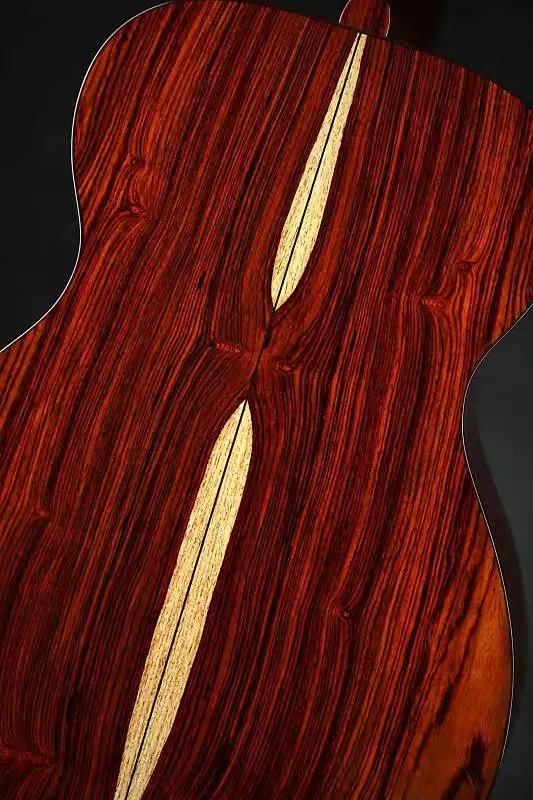
Taylor: It is a high-density, high-hardness wood with a beautiful appearance. Coco Polo is sonic similar to Acacia but has a deeper low-frequency resonance, although it doesn’t have as deep a low end as rosewood or large. cocoa
Polo’s rational response is sharp, the vibration feedback is very fast, and the sound will be moderately attenuated, but the graininess is very clear. We like to use this wood on a GS body; it’s a perfect match; the low-mid dominance of the GS body is mixed with the high-end of the Coco Polo wood.
Great for fingerpicking when used on a GC body. Note: It is suitable for many situations depending on the body. It is suitable for those who like a bright appearance and can give you a brighter sound than rosewood, and the low frequency is a bit shallower than rosewood.
(8) Yucatan broad-turned bean tree (Saizhou rosewood)
Taylor: Produced in Central America, it is a close relative of South American Dalbergia (Coco Polo), a rosewood species like Coco Polo. Sounds similar to rosewood, but the wood is harder and firmer, making it very loud. classical guitar

For this wood that has been in use for 50 years, Sitka spruce produces a clear, loud sound with a long sustain, generally speaking, this wood is in very limited supply.
Translator’s Note: Suitable for a variety of barrel shapes and styles, if you like a clear, silver bell-like sound and a rosewood-like tone, Dalbergia is a good choice.
(9) Ebony
Taylor: It’s generally used for fretboards and bridges but occasionally for backs and sides; it’s visually gorgeous. Like the Madagascar ebony, the low end tends to fall off but has rich and loud linearity throughout the frequency range.
Voices – none of them stand out. Remarks: It is suitable for people who like loud and crisp sounds. With the eucalyptus, the top will make the fundamental sound wrapped in rich and full sustain. This situation is more suitable for fingerstyle or soft touch, slow-playing guitarists, rather than fast or slow. Play hard.
Lakewood: The volume is huge, and the graininess is very clear
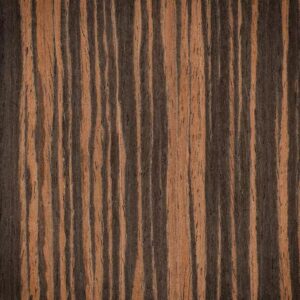
Extended Reading:
History Of Precipitation – Martin Guitar Brand History Review
Martin Guitar Internal Sound Beam Structure Revealed
The Latest And Most Popular Ten Most Popular Guitar Brands In 2022


